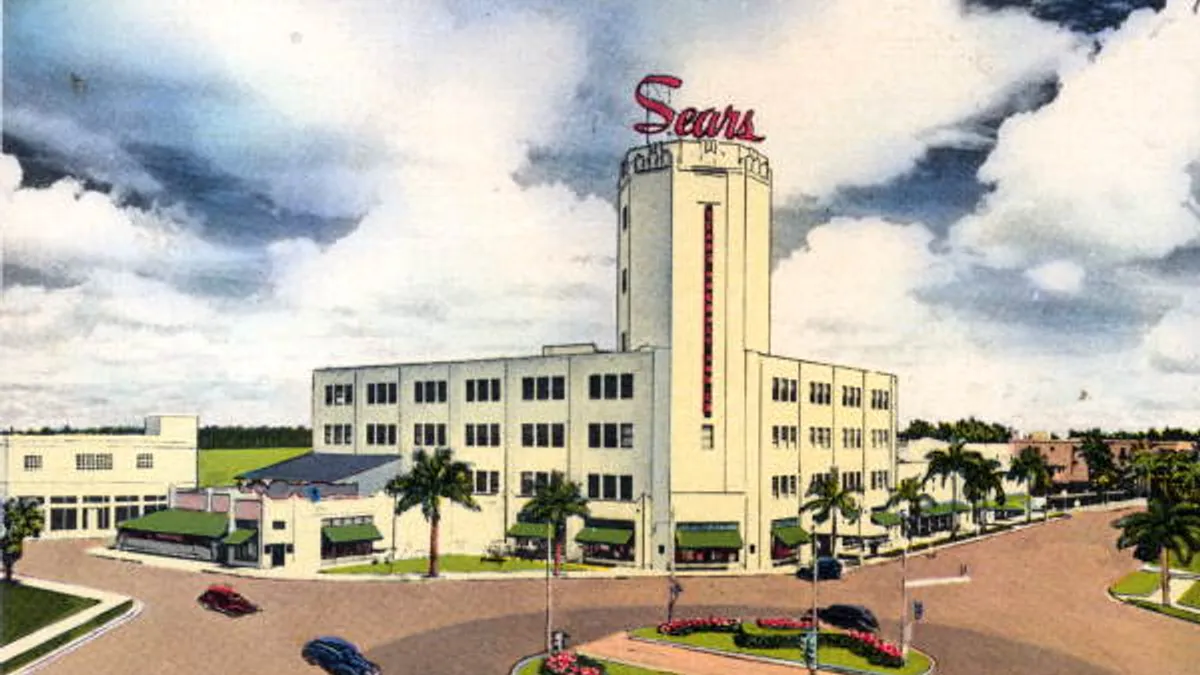Dive Brief:
-
Department store retailers must close hundreds of underperforming stores in order to recapture the level of productivity they enjoyed a decade ago, according to new research from real estate research company Green Street Advisors, the Wall Street Journal reports.
-
The Green Street Advisors report looks at sales metrics vs square footage, noting that department store sales in 2015 were $165 per square foot on average, a decline of 24% from 10 years ago, while square footage has increased by 7% overall.
-
If department stores were to take Green Street’s suggestion, even more malls would be decimated because so many still depend on them as anchors, even as malls have diversified their tenant mix to include restaurants and other attractions besides retail.
Dive Insight:
Department stores were once magnificent fixtures of downtown America, then strong anchor tenants of malls. Now they can’t seem to catch a break. Many experienced tough holiday seasons and their Q4 earnings reports missed expectations, leading several retailers (including Kohl’s and Macy’s) to tell investors that they’d be closing stores.
Even Nordstrom, which had seemed to escape the troubles plaguing rivals, has in recent quarters reported falling traffic and moved to cut costs, eliminating jobs in its IT ranks and at its headquarters.
As the Green Street report notes, while department stores were once the place to turn to for a diversity of goods from various brands and manufacturers, malls themselves have fulfilled that role, challenging their raison d’être.
“The department store emporiums, filled with endless wonderment and tremendous assortments, were supplanted by the growth of the retail shopping mall, which put these stores as anchors but surrounded them with specialty stores,” Columbia University retail studies professor Mark Cohen told Retail Dive last year.
“The department stores got tremendous value from being in the malls, but lost their franchise. Then the downtowns got decimated, so they lost their shoppers," he said. "Then the big-box players could move an enormous amount of volume. It’s not that the department stores had no chance. But they didn’t attempt to re-engineer themselves. By the time the internet came on, all but Nordstrom were late to the party and are still catching up. Meanwhile, there’s Amazon, a virtual marketplace that’s kind of like an infinite shopping mall, where you can get with one click anything you want to buy.”
Now there’s evidence that department stores are too numerous for their own good. If department stores hope to return to the productivity they experienced in 2006, they must close roughly a fifth of anchor space in U.S. malls, Green Street Advisors said.
But brick-and-mortar stores have emerged as an essential facet of today’s omnichannel operations, not just because many consumers continue to prefer shopping in stores, but also because many retailers find that a physical store boosts online sales in its surrounding zip codes.
“[W]e look at our stores every year and evaluate, but I do think there's a misperception out there that when we close a store, that that business transfers online,” Penney CFO Ed Record told analysts last November. “I will tell you, in general, when we close a store, particularly in a small market, we see our dot-com business go down as well. So we don't think there's a significant play by being able to close a significant number of stores and see that business transfer online.
“That said, the store has to be profitable for us to keep it open, and as [Penney CEO] Marvin [Ellison] has said, the store has to be worth more to us open than it is closed,” Record continued. “So that's how we evaluate it.”













